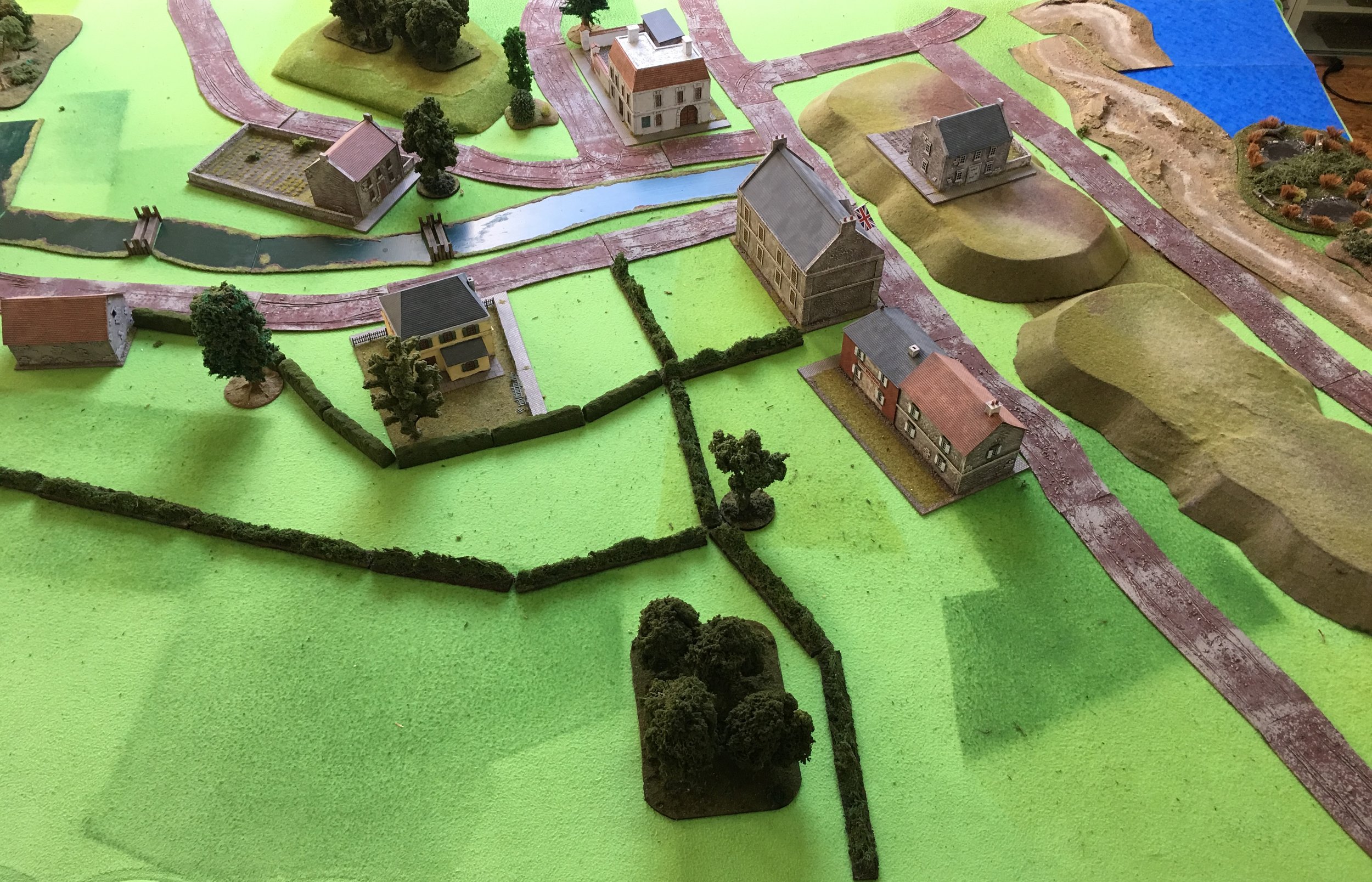In this scenario, elements of the London Irish Rifles defended the small sea side village of Seabrook against the German 21st Infantry Regiment. The Germans had to capture this position on their way to Folkestone. Securing of the port of Folkestone was necessary to allow German armour to be brought ashore.
While the German advance was halted in the previous scenario because they lacked artillery and armour support, the German commander (Frederik) now had Stukas and two 75mm infantry guns to his disposal to pepper the British positions. Especially the infantry guns would prove to be very helpful. Anecdote: it was only a few hours before the start of the game that I suddenly realized that I had painted the wrong guns for this scenario. Fortunately, I found two 75mm IG in my boxes of unpainted stuff and gave them a quick paint!
Fearing a German attack along Seabrook Road and the Princess Parade, or even a seaborne German operation behind his lines, the British player (Elias) concentrated his troops in the southern sector. This left the northern sector quite vulnerable.
The Germans indeed seemed to focus their attack on the houses of Seabrook Road. A Stuka attack and the well-aimed fire of the infantry guns made the British positions hard to keep. Both sides took heavy casualties in house-to-house (and soon: ruin-to-ruin) fighting.
With all attention focused on the southern sector, Frederik managed to get one of his Blinds (a full platoon) over the weir, thus threatening the back of the British positions. The combination of German fire and this new threat proved too much for the British. Some elements were soon surrounded and fought to the last bullet (at least, so they told afterwards), while the few remaining British sections fell back to Folkestone. With British losses in the range of 60 to 85 k/w/m against 32 Germans, this third scenario ended in a German victory.
Karim Van Overmeire










